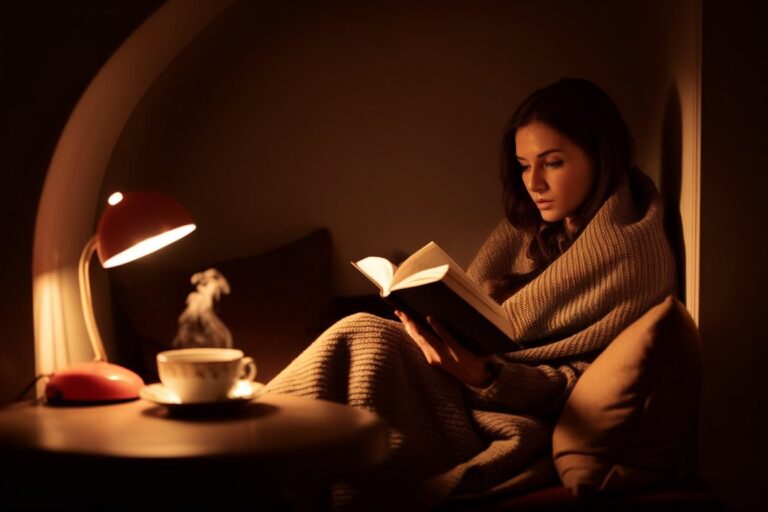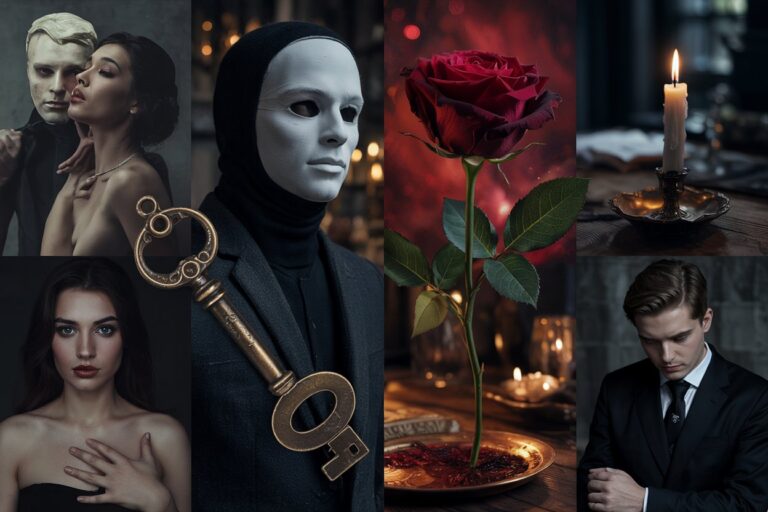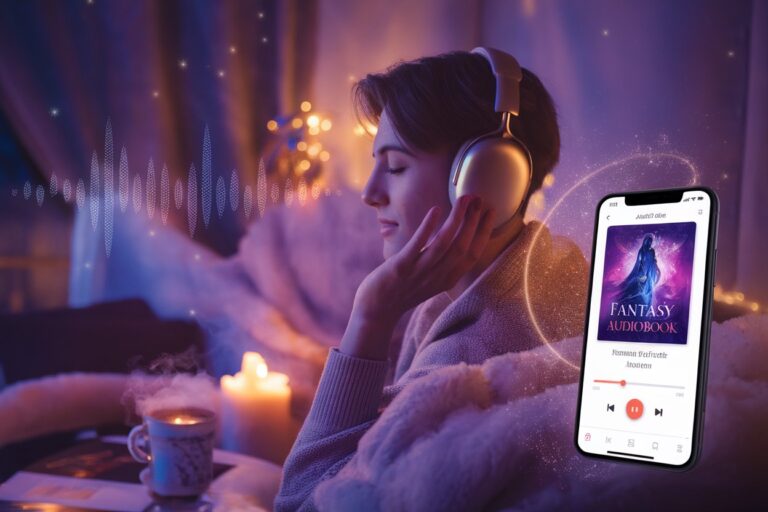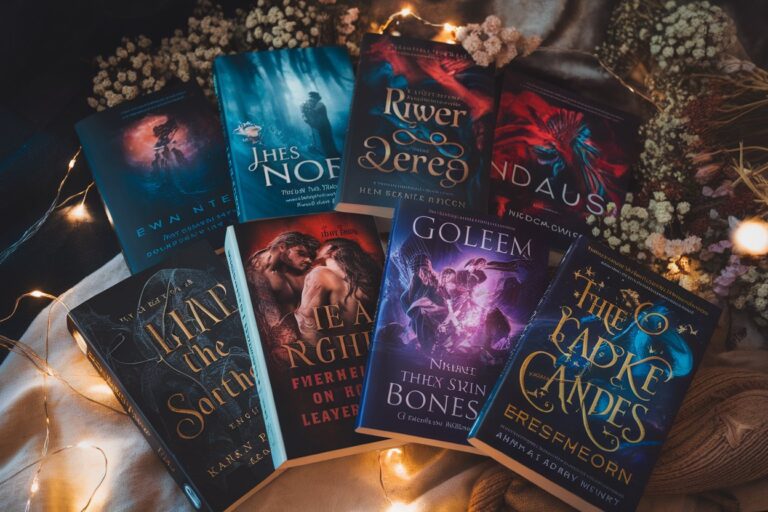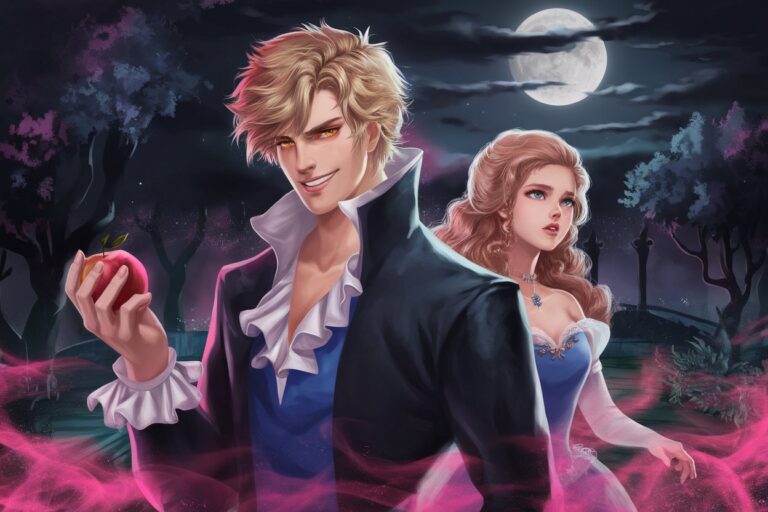Discover the alluring world of dark romance novels, from forbidden love to morally gray characters. Find your next spicy read with our comprehensive guide!
Have you ever found yourself drawn to the dangerous allure of a morally ambiguous character? That spine-tingling thrill when the line between love and danger blurs? If so, you’re not alone. Dark romance has captured the hearts of readers worldwide, offering an escape into the shadows where passion burns brightest.
As someone who’s spent countless nights unable to put down the latest dark romance novel, I’ve witnessed this genre evolve from a niche interest into a mainstream phenomenon. In this guide, I’ll take you through everything you need to know about dark romance—from defining what makes a romance “dark” to recommending some heart-pounding reads that will keep you up all night.
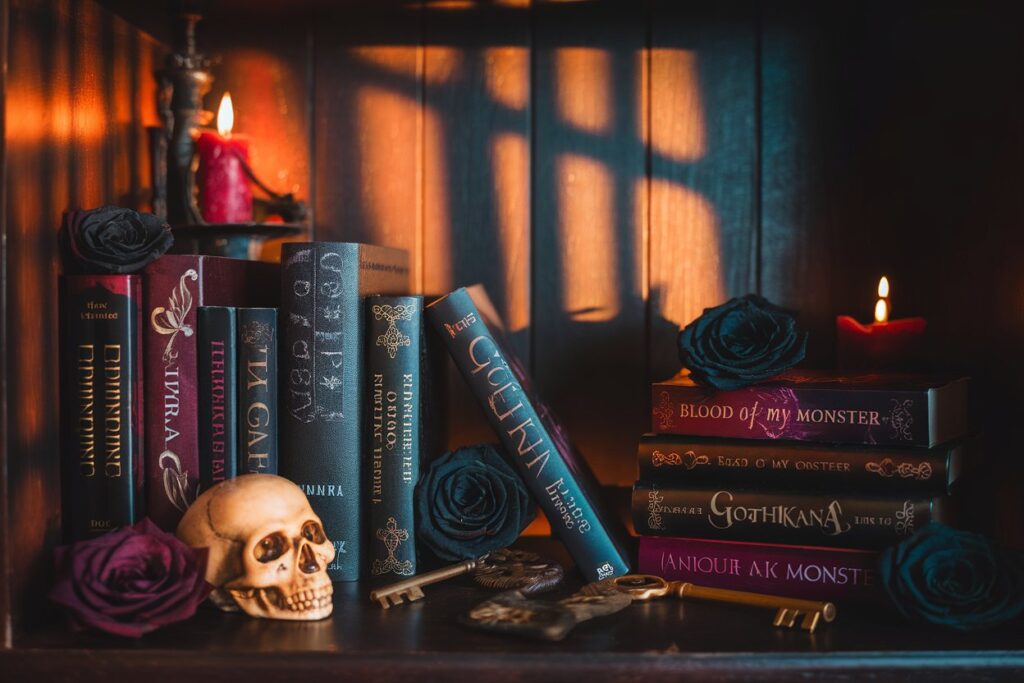
Table of Contents
- What Is Dark Romance? Understanding the Shadows
- Popular Dark Romance Tropes: Mapping the Territory
- Morally Gray Characters: The Heart of Dark Romance
- How Dark Romance Differs from Traditional Romance
- Why People Enjoy Reading Dark Romance
- Trigger Warnings: Navigating the Darkness Safely
- Beginner-Friendly Dark Romance Books: Dipping Your Toes
- Best Authors in the Dark Romance Genre
- Common Themes in Dark Romance Novels
- Is Dark Romance Always About Toxic Relationships?
- Can Dark Romance Have Happy Endings?
- Power Dynamics in Dark Romance Stories
- Taboo Topics in Dark Romance Novels
- Finding New Dark Romance Books to Read
- Bully vs. Mafia Romance: Understanding the Difference
- Can Men Enjoy Reading Dark Romance Novels, Too?
- Movies and TV Shows Similar to Dark Romance Books
- Best-Selling Dark Romance Series
- Conclusion: Embracing the Darkness
What Is Dark Romance? Understanding the Shadows
Dark romance isn’t just your typical love story with the lights turned off. It’s a subgenre that explores the murkier, more complex facets of relationships and desire. These stories often feature characters and situations that challenge conventional morality, pushing boundaries and exploring taboo themes.
Unlike traditional romance, dark romance doesn’t shy away from uncomfortable situations. Instead, it embraces them, using darkness as a backdrop to highlight the intensity of human emotions and connections.
I remember picking up my first dark romance novel, expecting just another love story. What I got instead was a narrative that made me question my own moral compass while simultaneously being unable to stop turning pages. That’s the power of this genre.
What Makes a Romance Novel “Dark”?
Dark romance novels typically feature several key elements that distinguish them from traditional romance:
- Morally gray or ambiguous characters who don’t fit neatly into “good” or “bad” categories
- High-stakes situations that put characters under extreme pressure
- Psychological intensity that explores deeper, sometimes uncomfortable emotions
- Taboo themes that challenge social norms
- Complex power dynamics between the main characters
- Graphic or explicit content that doesn’t gloss over difficult subjects
These elements combine to create stories that feel both dangerous and irresistible—much like the characters who inhabit them.
Popular Dark Romance Tropes: Mapping the Territory
Tropes in dark romance serve as familiar pathways through unfamiliar terrain. They’re the patterns we recognize that help us navigate these complex stories. Here are some of the most compelling tropes you’ll encounter:
1. Enemies to Lovers
Perhaps one of the most beloved tropes across all romance genres, “enemies to lovers” takes on a particularly intense quality in dark romance. Here, the hatred is often genuine, deep-seated, and sometimes violent. The journey from hatred to love isn’t smooth or predictable, making the eventual connection all the more powerful.
Books like “Malice” by Coralee June exemplify this trope, showing how true animosity can transform into something else entirely when characters are forced to confront their true feelings.
2. Captivity/Kidnapping Romance
Controversial but undeniably popular, captivity romances explore extreme power imbalances. These stories often feature Stockholm Syndrome elements, where captives develop complex feelings for their captors.
“Captive in the Dark“ by CJ Roberts and “Tears of Tess” by Pepper Winters are classic examples that explore the psychological complexities of being held against one’s will while developing unexpected emotional attachments.
3. Mafia/Organized Crime Romance
The dangerous world of organized crime provides a perfect backdrop for dark romance. These stories feature powerful, ruthless men who live by their own code and the women who somehow find themselves entangled in their worlds.
“Blood of My Monster” by Rina Kent and “Painted Scars” by Neva Altaj showcase how the rigid loyalty and constant danger of mafia life create intense, all-consuming relationships.
4. Bully Romance
These stories focus on relationships that begin with torment and cruelty. The bully—often harboring secret reasons for their behavior—eventually reveals vulnerability beneath their harsh exterior.
This trope explores the fine line between hatred and passion, showing how intense negative feelings can sometimes transform into something else entirely.
5. Revenge Romance
Few motivations burn as hot as revenge. In these stories, at least one character enters the relationship with ulterior motives, seeking to hurt the other person—only to find their plans complicated by unexpected feelings.
“Marrow” by Trisha Wolfe & Brynne Weaver exemplifies this trope, showing how the pursuit of vengeance can lead to unexpected emotional entanglements.
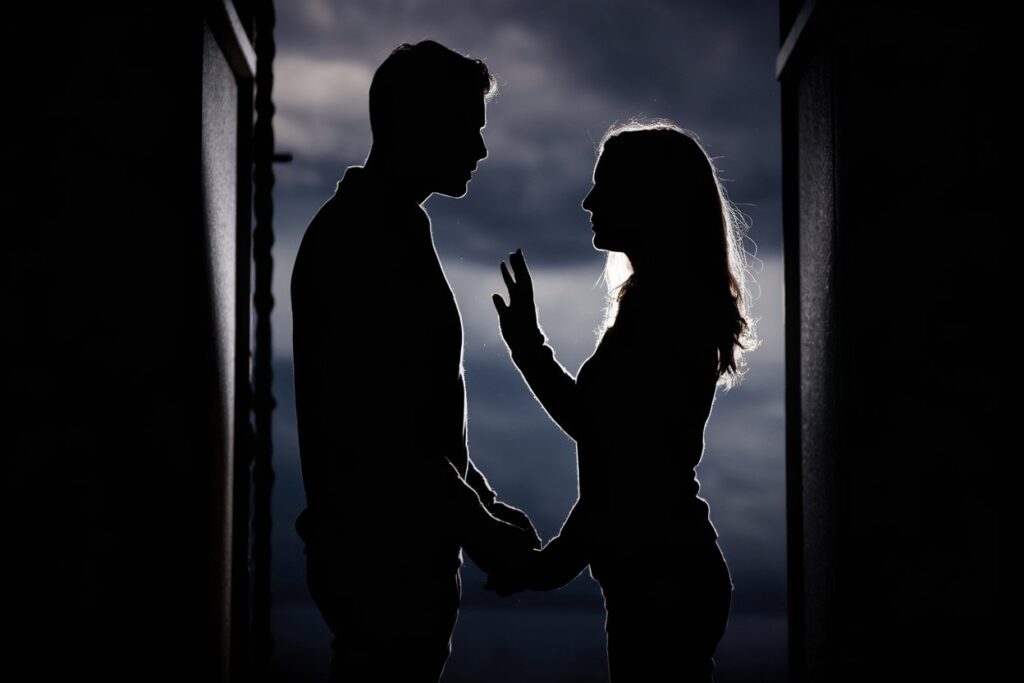
Morally Gray Characters: The Heart of Dark Romance
What exactly makes a character “morally gray”? It’s not simply that they do bad things—it’s that their motivations, values, and actions exist in a complex ethical middle ground.
These characters might:
- Have noble intentions but use questionable methods
- Live by a personal code that doesn’t align with societal norms
- Have experienced trauma that shapes their worldview
- Be capable of both extreme cruelty and profound tenderness
- Make difficult choices in impossible situations
The appeal of morally gray characters lies in their complexity. They feel more human than purely heroic characters because they reflect our own internal contradictions. We see our own capacity for both good and evil reflected in their stories.
In books like “The Mindfck Series” by S.T. Abbey, morally gray characters show us that human nature isn’t black and white—and that sometimes, the most compelling people live in the shadows in between.
How Dark Romance Differs from Traditional Romance
While traditional romance focuses primarily on the journey to love and commitment, dark romance explores additional territory:
| Traditional Romance | Dark Romance |
|---|---|
| Focus on healthy relationships | Explores toxic or complex dynamics |
| Clear heroes and villains | Morally ambiguous characters |
| Conflict is external to the relationship | Conflict often exists within the relationship |
| Sexual content is generally consensual | May include dubious consent themes |
| Guaranteed happy ending (HEA) | May have conditional or compromised happy endings |
| Emotional safety for readers | Deliberately pushes comfort boundaries |
This doesn’t mean dark romance glorifies unhealthy relationships—rather, it examines them through a fictional lens that allows readers to explore complex emotions and scenarios safely.
Why People Enjoy Reading Dark Romance
The appeal of dark romance might seem puzzling to outsiders. Why would anyone enjoy reading about morally questionable characters or painful situations? The answers reveal much about human psychology:
1. Psychological Exploration
Dark romance offers a safe space to explore dangerous scenarios without real-world consequences. It’s like a literary roller coaster—thrilling because of the illusion of danger, not despite it.
2. Emotional Intensity
Few genres match the emotional highs and lows of dark romance. These stories push characters to their limits, creating moments of extraordinary emotional power.
I still remember sitting in my living room at 3 AM, completely wrecked by a particular scene in “Still Beating” by Jennifer Hartmann. The emotional intensity of that moment—possible only because of the dark context—left me thinking about the book for weeks.
3. Complexity and Depth
Dark romance often delves deeper into character psychology than lighter genres. The exploration of trauma, resilience, and redemption creates stories with significant emotional complexity.
4. Escapism with Edge
While all fiction offers escapism, dark romance provides a particularly potent form—one that acknowledges life’s darkness while still ultimately offering hope.
5. Catharsis
There’s something cathartic about experiencing extreme emotions through fiction. Dark romance offers readers a way to process complex feelings in a controlled environment.
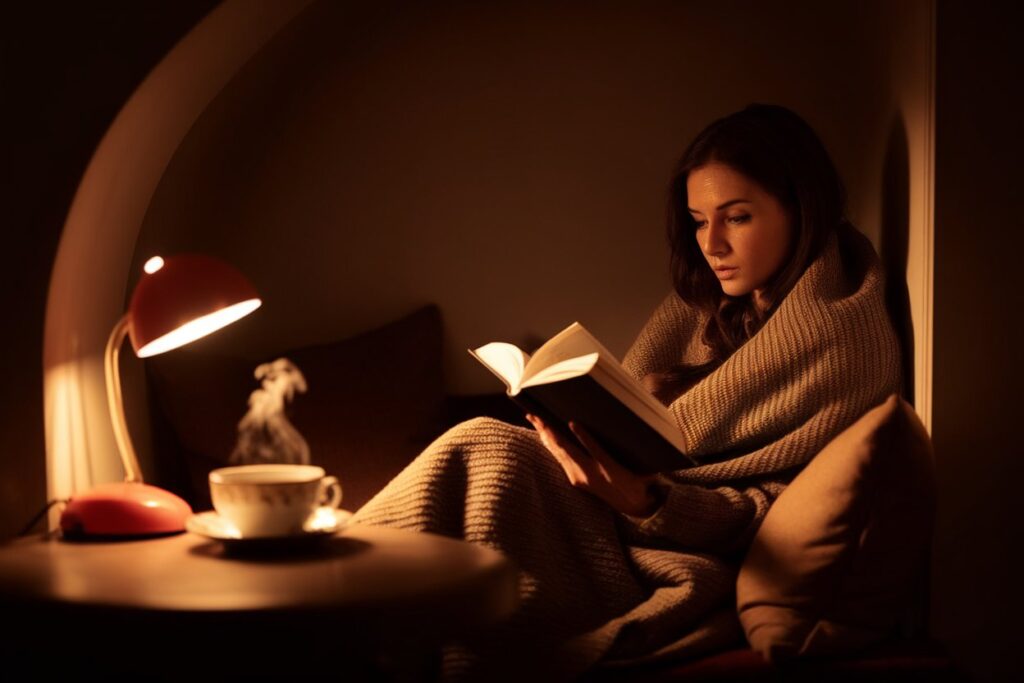
It’s important to acknowledge that dark romance isn’t for everyone. These books often contain content that some readers may find disturbing or triggering.
Responsible authors and publishers typically include trigger warnings to help readers make informed choices. Common triggers in dark romance may include:
- Sexual assault or dubious consent
- Physical violence or torture
- Kidnapping or captivity
- Emotional or psychological abuse
- Suicide or self-harm
- Graphic violence
- Drug use
- Age gaps or power imbalances
I always appreciate when authors take the time to list potential triggers. It doesn’t diminish the reading experience—it enhances it by allowing readers to engage with challenging content on their own terms.
Beginner-Friendly Dark Romance Books: Dipping Your Toes
If you’re curious about dark romance but unsure where to start, here are some gateway books that balance darkness with accessibility:
1. “Gothikana” by RuNyx
This atmospheric novel set at a mysterious university offers gothic vibes and a compelling romance without diving into the genre’s most extreme elements. The dark academia setting creates natural tension while still providing moments of lightness and humor.
2. “The Ritual” by Shantel Tessier
Exploring secret societies and power dynamics in a college setting, this book introduces darker themes while maintaining a compelling romance at its core. The familiar college setting helps ground some of the more intense elements.
3. “Anti-Heroes in Love Duet” by Giana Darling
This duet features morally gray characters, perfect for readers new to the genre, balancing redemption arcs with approachable storytelling. The gradual development of darker themes makes it an excellent entry point.
4. “Haunting Adeline” by H.D Carlton
A suspenseful stalker romance that introduces elements of obsession and control while maintaining a compelling romantic arc. The gradual building of tension makes the darker elements more accessible to newcomers.
5. “Along for the Ride” by Lauren Biel
This hitchhiker romance combines road trip elements with darker themes, creating an accessible entry point for readers new to the genre. The familiar setting helps ease readers into the more challenging aspects of the story.
Best Authors in the Dark Romance Genre
The dark romance landscape is filled with talented authors who excel at creating complex, emotionally resonant stories. Here are some of the most prominent voices in the genre:
Pam Godwin
A master of creating intense, emotionally complex dark romances across various settings. Her versatility shines in works like “Dark Notes,” “Sea of Ruin,” and the “Deliver” series.
Pepper Winters
Known for pushing boundaries and creating unforgettable, deeply flawed characters. Her prose is often poetic, creating a striking contrast with her darker themes.
CJ Roberts
A pioneer in the darker side of romance, particularly known for the “Dark Duet” series beginning with “Captive in the Dark.” Her unflinching approach to difficult subjects has influenced countless authors.
Sophie Lark
Excels at creating immersive criminal underworlds populated by complex characters, particularly in mafia settings. Her “Kingmakers” series showcases her talent for balancing darkness with compelling romance.
Jennifer Hartmann
Specializes in emotional depth and trauma recovery, crafting stories that break readers’ hearts before carefully putting them back together. “Still Beating” demonstrates her exceptional skill at handling difficult subjects with sensitivity.
Common Themes in Dark Romance Novels
Beyond specific tropes, certain themes recur throughout dark romance, adding depth and complexity to these stories:
Redemption
Many dark romances follow characters seeking redemption for past sins or trying to overcome their darker natures. The question of whether someone can truly change after doing terrible things drives many of these narratives.
Trauma and Healing
Dark romance often explores how characters navigate past trauma, using the intense connection of romance as a pathway to healing. These stories acknowledge that healing isn’t linear or simple—it’s messy, complicated, and sometimes involves forming attachments that seem counterintuitive.
Power Dynamics
The exploration of power—who has it, how they use it, and how it shifts—lies at the heart of many dark romances. These books examine how power imbalances affect relationships and how genuine connection requires vulnerability from even the most powerful characters.
Moral Relativism
Rather than presenting clear moral guidelines, dark romance often explores ethical gray areas. Characters make difficult choices in impossible situations, challenging readers to consider what they might do under similar circumstances.
Transformation
Dark romance frequently charts the transformation of characters—from darkness to light, from isolation to connection, from hatred to love. These transformative journeys create powerful character arcs that resonate deeply with readers.
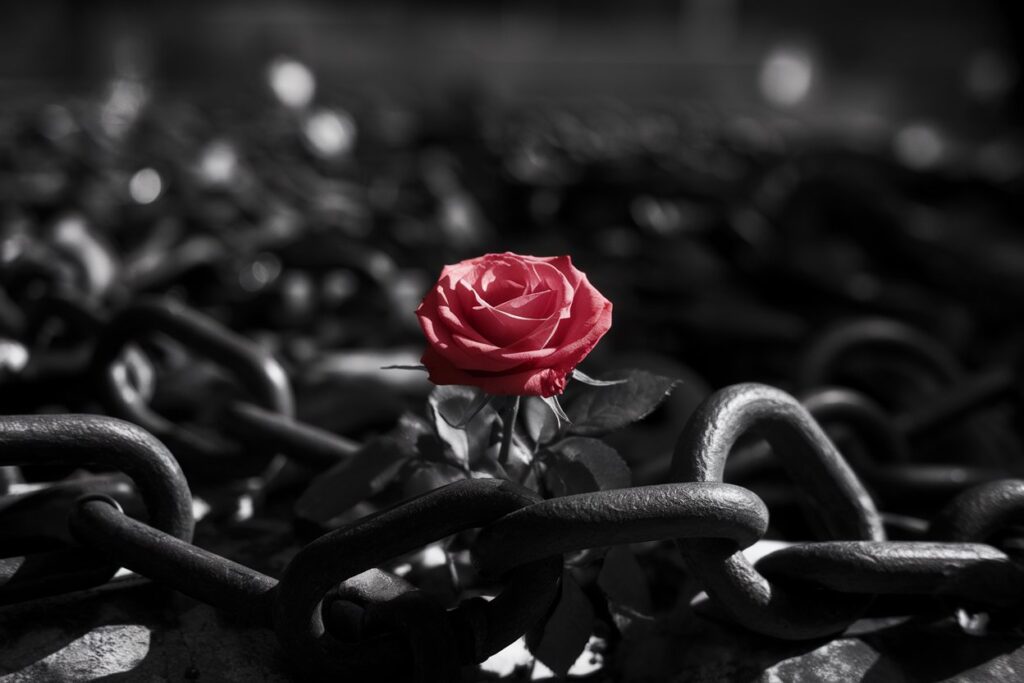
Is Dark Romance Always About Toxic Relationships?
One common misconception about dark romance is that it glorifies or promotes toxic relationships. The reality is more nuanced.
Dark romance does explore unhealthy dynamics, but the best books in the genre don’t present these relationships as ideals to emulate. Instead, they use fiction as a safe space to examine complex psychological terrain.
Many dark romances actually chart a path from toxicity toward healing. Characters often recognize harmful patterns and work to overcome them, even if the journey isn’t smooth or complete.
I’ve found that dark romance actually helped me better identify unhealthy relationship patterns in real life. By exploring these dynamics in fiction, I developed a clearer understanding of boundaries and red flags.
That said, it’s important for readers to maintain critical awareness. Enjoying a problematic relationship in fiction is entirely different from pursuing one in reality.
Can Dark Romance Have Happy Endings?
Absolutely! While dark romance takes readers through challenging territory, many books in the genre still deliver satisfying happy endings (HEAs) or happy-for-now (HFN) conclusions.
These endings might look different from those in traditional romance. They may be:
- Conditional: Happiness that comes with certain compromises or costs
- Hard-won: Requiring significant growth and change from both characters
- Morally complex: A happy ending within the characters’ value system, even if it doesn’t align with conventional morality
- Bittersweet: Combining elements of joy and sorrow, gain and loss
The journey in dark romance is typically more grueling, making the eventual happiness all the more satisfying when it arrives. After watching characters overcome tremendous obstacles, their eventual connection feels earned in a way that’s uniquely powerful.
Power Dynamics in Dark Romance Stories
Power—who has it, how they use it, and how it shifts—forms a central axis around which dark romance often revolves. These dynamics create tension and drive character development in several ways:
Physical Power
Many dark romances feature significant physical power imbalances, often with male characters who are physically stronger or who use force to control situations. How characters navigate these imbalances—whether through resistance, accommodation, or subversion—creates compelling character arcs.
Psychological Power
Beyond physical strength, dark romance explores psychological power: manipulation, emotional leverage, and mental resilience. Often, physically weaker characters wield surprising psychological power, creating complex dynamics.
Social Power
Differences in social standing—whether through wealth, family connections, or social status—create additional layers of power imbalance. Mafia romances particularly explore how social hierarchies create both barriers and attraction between characters.
Sexual Power
Dark romance frequently examines how power dynamics manifest in sexual relationships, exploring concepts of domination, submission, and the exchange of control. These elements create intense intimacy between characters while raising questions about agency and consent.
The most compelling dark romances don’t simply establish power imbalances—they explore how these dynamics evolve and shift as characters grow and relationships develop.
Taboo Topics in Dark Romance Novels
Dark romance often ventures into territory considered taboo in mainstream fiction. These controversial elements create tension and challenge readers’ comfort zones while exploring complex psychological territory.
Common taboo elements include:
Age Gaps
Significant age differences between romantic partners appear frequently in dark romance, exploring the power dynamics and life experience disparities these relationships entail.
Dubious Consent
The gray area between clear consent and non-consent creates morally complex territory that dark romance often explores. These scenes raise difficult questions about agency, power, and desire.
Forbidden Relationships
From step-siblings to teacher-student dynamics (as in “Dark Notes” by Pam Godwin), forbidden relationships add tension and complexity to dark romance narratives.
Criminal Activity
Dark romance rarely features law-abiding citizens. Instead, characters often engage in illegal activities, from organized crime to kidnapping to various forms of violence.
It’s worth noting that exploring these elements in fiction doesn’t equate to endorsing them in reality. Fiction provides a safe space to examine complex human psychology without real-world consequences.
Finding New Dark Romance Books to Read
With the genre’s growing popularity, discovering new dark romances has never been easier. Here are some effective strategies:
Social Media
- TikTok: The #BookTok community has embraced dark romance, with creators regularly sharing recommendations and reviews
- Instagram: Bookstagrammers often feature dark romance titles, particularly highlighting new releases
- Facebook Groups: Dedicated dark romance reading groups provide recommendations and discussions
Goodreads Lists
Goodreads features numerous reader-created lists specifically for dark romance, often organized by trope or theme. These community-curated collections offer excellent starting points for exploration.
Book Subscription Services
Services like Kindle Unlimited include numerous dark romance titles, making it cost-effective to explore the genre. Many dark romance authors publish exclusively through these platforms.
Author Cross-Promotion
Once you find an author you enjoy, check who they recommend or collaborate with. Dark romance authors often cross-promote with colleagues writing similar material.
Newsletter Subscriptions
Subscribing to newsletters from your favorite dark romance authors ensures you’ll be notified about new releases and often provides access to exclusive content.
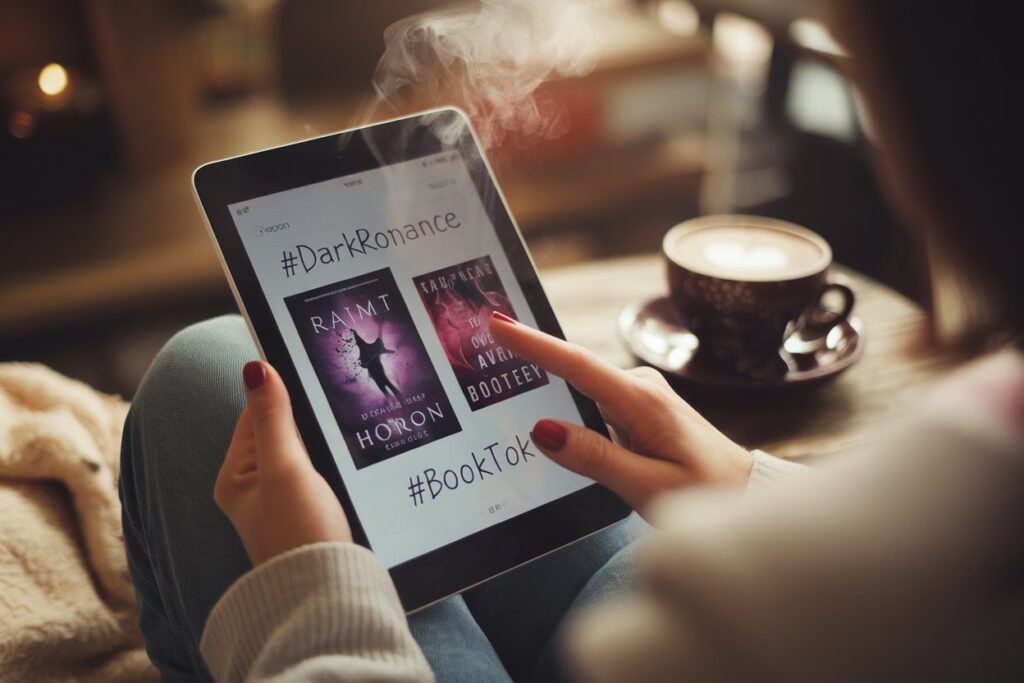
Bully vs. Mafia Romance: Understanding the Difference
Two popular subgenres within dark romance—bully romance and mafia romance—offer different flavors of darkness. Here’s how they compare:
| Bully Romance | Mafia Romance |
|---|---|
| Usually set in high school or college | Typically set in criminal underworlds |
| Power derived from social status or physical intimidation | Power derived from criminal hierarchy and wealth |
| Often includes elements of public humiliation | Usually involves violence and criminal activity |
| Antagonism typically stems from personal history | Conflict often relates to rival organizations or loyalty |
| Frequently includes pranks or hazing | Often features dangerous situations and protection themes |
| Examples: “Enemies” series, “Cruel” series | Examples: “Blood of My Monster,” “Painted Scars” |
Both subgenres explore power imbalances and moral ambiguity but through different contexts and character dynamics. Many readers enjoy both for the variety of darkness they offer.
Can Men Enjoy Reading Dark Romance Novels, Too?
Absolutely! While marketing often targets women, nothing about dark romance is inherently gendered. The psychological complexity, moral ambiguity, and high-stakes scenarios appeal to many readers regardless of gender.
In fact, the growing popularity of dark romance has led to increased diversity in both characters and readership. More male authors are entering the space, and more men are discovering these compelling stories.
What matters isn’t the reader’s gender but their interest in complex relationships, psychological depth, and stories that explore moral gray areas. Anyone who enjoys those elements can find something to appreciate in dark romance.
Movies and TV Shows Similar to Dark Romance Books
If you enjoy dark romance in literary form, you might appreciate these visual storytelling counterparts:
1. “You” (Netflix)
This psychological thriller series follows Joe Goldberg, whose obsessive “love” drives him to extreme measures. The show explores many themes common in dark romance, including obsession, stalking, and the fine line between love and danger.
2. “365 Days” (Netflix)
Based on Blanka Lipińska’s novels, this controversial film franchise features a mafia boss who kidnaps a woman and gives her one year to fall in love with him. While critically panned, its popularity highlights the audience’s interest in dark romantic themes.
3. “Killing Eve”
Though not marketed as romance, the complex relationship between Eve and Villanelle exhibits many dark romance elements, including obsession, dangerous attraction, and morally gray characters.
4. “True Blood”
This supernatural series features numerous dark romance elements, including power imbalances, dubious consent themes, and morally ambiguous characters drawn to dangerous attractions.
5. “Game of Thrones”
Several relationships in this epic fantasy series embody dark romance elements, particularly those involving power struggles, forbidden attraction, and morally complex characters.
Best-Selling Dark Romance Series
For readers who want to dive deep into extended dark romance worlds, these popular series offer multiple books to enjoy:
1. The Mindfck Series by S.T. Abbey
This psychological thriller series features a complex relationship between a morally gray heroine and an FBI agent. With five books in the series, it offers a deep dive into psychological manipulation and complex character development.
2. Deliver Series by Pam Godwin
Exploring captivity themes and unexpected connections, this six-book series follows different couples navigating extremely challenging circumstances. Each book pushes boundaries while delivering emotional depth.
3. Sinners Duet by Sophie Lark
Beginning with “There Are No Saints,” this duet features an artist caught between two rival serial killers’ obsessions. The dark psychological elements and moral ambiguity make this a compelling example of the genre.
4. Malice Mafia by Coralee June
This mafia-themed forbidden romance series combines danger, passion, and complex power dynamics. The criminal underworld setting creates natural tension and high stakes.
5. The Dark Duet by CJ Roberts
Starting with “Captive in the Dark,” this pioneering dark romance series explores extreme captivity scenarios and the complex psychological territory of Stockholm Syndrome.
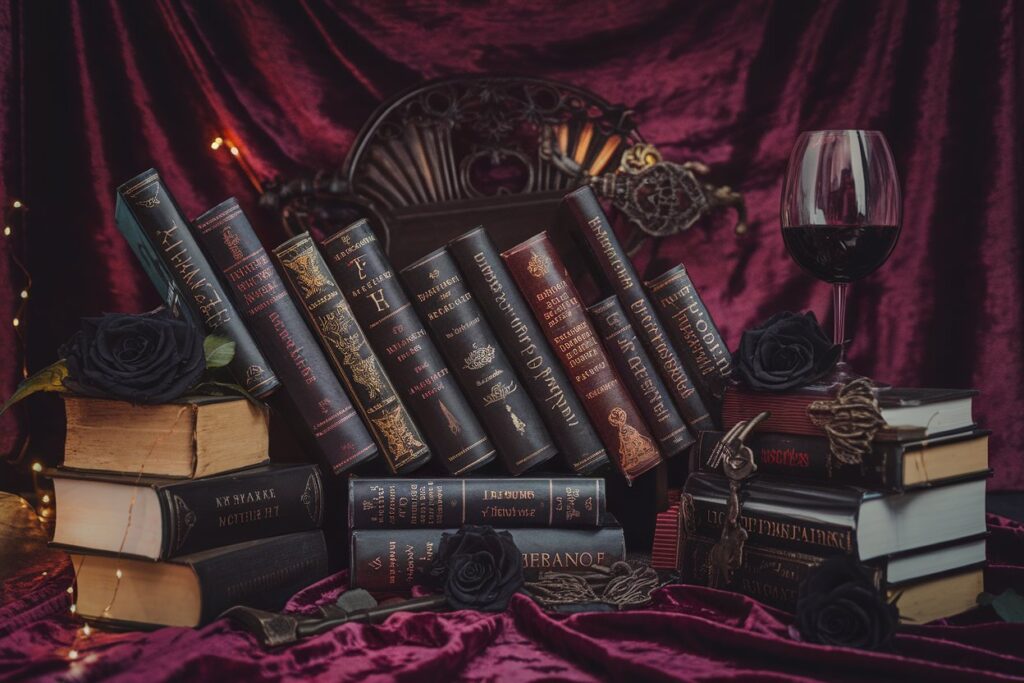
Conclusion: Embracing the Darkness
Dark romance offers readers something unique: stories that acknowledge life’s shadows while still affirming the power of connection and resilience. These books don’t shy away from difficult topics or complicated emotions—they lean into them, creating narratives of extraordinary emotional power.
Whether you’re a seasoned dark romance reader or curious about dipping your toes into these shadowy waters, I hope this guide has helped you better understand this complex, compelling genre.
The beauty of dark romance lies in its acknowledgment that light means more when contrasted with darkness. By exploring the shadows, these books ultimately affirm something profound about human connection—that love can find us in our darkest moments, that healing is possible even after terrible trauma, and that everyone, no matter how flawed, deserves to find their way to happiness.
Have you read any of the dark romance books mentioned in this article? Do you have favorites to recommend? I’d love to hear about your experiences with this fascinating genre in the comments below!
Remember, the best dark romances don’t just thrill us with their darkness—they move us with their light.
